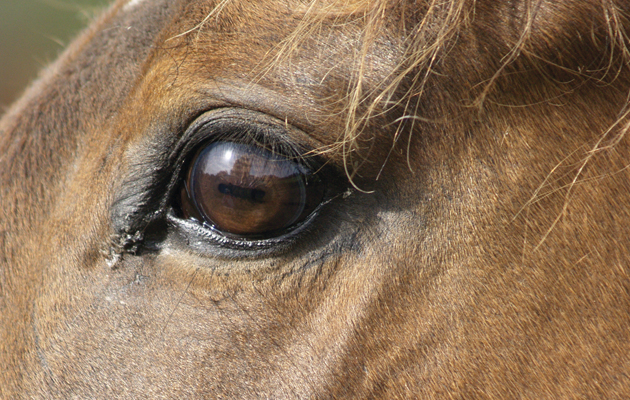
When my friend ‘A’ announced we were off to Shropshire for another weekend of trail riding, my heart missed a beat.
“Oh that’s great,” I said, feigning excitement, when in reality my old bones were creaking in advance protest at the thought of 12 hours in the saddle. Was this really a good idea? Surely we were too old for such capers.
But A is a forceful woman and I knew better than to protest so, like a dutiful friend, I agreed with a smile and rushed out to the local saddlers with just two hours to spare for a new pair of lightweight jods. After trying on some strange new-fangled riding tights which made me look like I was about to do a shotput event, I plumped for a looser pair — not as lightweight as I had hoped, but extremely comfortable all the same.
The temperature for the weekend was set to get hotter than Barcelona and the thought of sweltering in thick clothes, long boots and a hat didn’t appeal. So armed with sun cream, wine, painkillers and my new purchase, we set off with our latest recruit ‘C’ in the driving seat.
Now for anyone who hasn’t been, Shropshire is a beautiful county with superb riding through stunning countryside. There are quiet country lanes, miles of off-road tracks and a number of wide, sweeping paths cut around the edges of farmers’ fields for horses and riders to use. The pubs even offer tie-up areas and turn out fields for horses while riders nip inside for a quick drink or spot of lunch. Perfect. It really is riding country and our destination, Country Treks, was situated in the lovely village of Stottesdon, just a few miles from Bridgnorth. The only problem was that each time we had been before, we struggled to find it.
Like some enchanted Brigadoon, rising out of the Scottish mist once every 100 years, Stottesdon always seems to be three miles away. No matter which route we follow, my old road atlas, is quite unable to take me there. We have spent literally hours circling the same few miles until finally we stumble across it, exhausted and irritable, vowing to throw the old map away and invest in a sat nav.
But this trip was different. C was driving and she had an in-car navigation system that looked sophisticated enough to land planes at the airport. Rather than our usual inept efforts, with A and I bumbling around like a pair of short-sighted day trippers, we drove straight to the door without incident. The pub beckoned but the Knackered Riders Club lived up to its name and it wasn’t long before we scurried home, moaning that the music from the live band was too loud.
The next morning, after enough breakfast to sink a battleship, it was down to the yard and we were given our horses. Mine was a 16.3hh coloured mare called Puzzle who looked strong enough to carry me, with my scrambled eggs, toast and all. So with the help of the mounting block, I got on. Much taller than I was used to, she felt very comfortable indeed. C was given a pretty grey mare called Willow, while A snaffled her favourite, Lucky, a New Forest type that she had ridden before.
Led by our instructor Chloe, we set off through the village, heading for the Clee Hills. On our way to Brown Clee, we took in tracks and fields, with plenty of canters and before I knew it, my face was fixed in a permanent smile. There really is something about breathing in the clean country air and being on horseback that makes you feel so joyful that everything else pales into oblivion.
The hedges were cloaked in swathes of creamy hawthorn blossom with delicate fronds of cow parsley and clumps of pink campion wild flowers beneath. Cantering up a sloping field, a deer appeared at the top, watching us as we approached, then popped smartly over a fence to disappear into the woods just at the last moment. As we dropped back down to the lane, a brown hare sunbathed at the edge of the field while a hawk hovered overhead, effortlessly floating on the breeze. A herd of wild ponies trotted over to us, their eyes alert, their nostrils blowing as we rode past.
Continued below…
Like this? You might also enjoy reading these:
The second day was equally spellbinding. My back was starting to stiffen up by now and my legs were aching but there was no way I was going to miss a single moment of our wonderful trip. Sadly as all good things must come to an end, so did our trip to Shropshire.
“We must come again next year,” I said, as we packed the car. “Don’t be silly, that’s far too long to wait — I’ve already been into the office and booked to come back this summer,” replied A. I smiled. There’s no point arguing with a woman on a mission.
Diane
For all the latest news analysis, competition reports, interviews, features and much more, don’t miss Horse & Hound magazine, on sale every Thursday.
In this week’s edition, out on 24 May, don’t miss our “cob special”, including how to find the perfect cob, meet champion cob Our Cashel Blue and more.









































